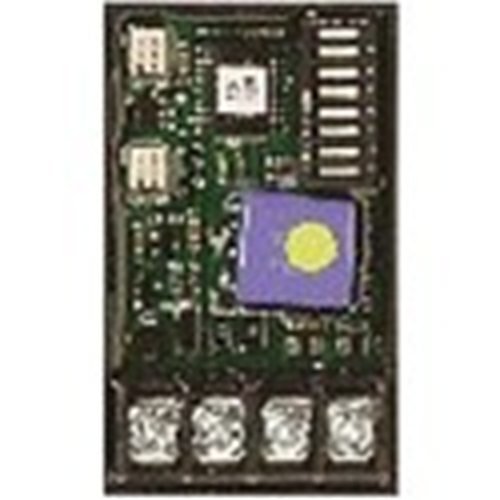The SD 500 MIM (Metal Injection Molding) is a specialized
manufacturing process that involves molding metal parts through a combination
of metal powder and plastic binder. The process consists of several stages,
including mixing the metal powder and binder, injection molding, debinding, and
sintering.
Mixing: In the mixing stage, metal powder and binder are
mixed together to form a homogenous mixture. The binder used in MIM can be a
thermoplastic or thermoset material and is chosen based on the desired
properties of the final product.
Injection Molding: The mixture is then fed into an
injection molding machine where it is molded into a desired shape under high
pressure and temperature. The molded parts are then cooled and removed from the
mold.
Debinding: The molded parts are then subjected to a
debinding process, which removes the binder material, leaving behind a porous
structure known as a “green part”.
Sintering: The green parts are then sintered in a
high-temperature furnace to remove any residual binder and to fuse the metal
particles together. The sintering process also reduces the porosity of the
parts and increases their strength and density.
The SD 500 MIM process is widely used in the production of
small and complex metal parts for a variety of industries, including aerospace,
medical, and firearms. The process offers several advantages over traditional
metal forming methods, including improved dimensional accuracy, reduced
production time, and lower costs. The process is also ideal for producing parts
with complex geometries and internal structures that cannot be produced through
other metal forming processes.
Overall, the SD 500 MIM process is a highly specialized and
efficient method for producing metal parts with precise dimensions and high
strength. It is a cost-effective alternative to traditional metal forming
methods and is ideal for producing small and complex metal components.
I. Introduction
A. Definition of SD500-MIM SD500-MIM refers to Metal
Injection Molding, which is a manufacturing process that combines the benefits
of traditional injection molding and powder metallurgy. This process is used to
produce complex and high-precision metal parts.
B. Importance of SD500-MIM in the industry SD500-MIM is an
essential manufacturing process for a variety of industries, including
aerospace, medical, automotive, and consumer goods. The process enables the
production of high-precision metal parts that meet tight tolerances, with
repeatable quality. The parts produced through this process are strong,
durable, and lightweight, making them suitable for a variety of applications.
C. Purpose of the article The purpose of this article is to
provide a comprehensive overview of the SD500-MIM process, its benefits, and
how it is used in various industries. The article aims to help readers
understand why SD500-MIM is becoming increasingly popular and the advantages it
offers over other traditional manufacturing processes. This information can be
useful for those who are involved in manufacturing, engineering, or related
fields and are looking to gain a better understanding of this process and its
applications.
II. Background of SD500-MIM
A. History
of SD500-MIM:
B. Metal
Injection Molding (MIM) is a modern manufacturing process that was first developed
in the late 1970s. It was initially used to create small and intricate metal
parts that could not be produced through traditional methods. The SD500-MIM is
a newer iteration of the process that was developed in the early 2000s and has
since become one of the most popular MIM systems used in various industries.
B. Evolution of SD500-MIM:
Over the years, the MIM process has gone through several
improvements, making it more efficient, cost-effective, and versatile. The
SD500-MIM, in particular, has incorporated several advancements in its design,
such as advanced feedstock systems, high-temperature sintering furnaces, and
precision tooling, among others. These improvements have enabled the SD500-MIM
to produce high-quality metal parts with greater consistency and accuracy than
earlier versions of the MIM process.
C. Comparison to traditional manufacturing methods:
Traditionally, metal parts were produced through methods
such as casting, forging, and machining, all of which have limitations in terms
of their ability to produce small and intricate parts. In contrast, the
SD500-MIM process has the ability to produce parts with intricate geometries,
precise dimensional tolerances, and high-quality surface finishes. Furthermore,
the process is much more efficient than traditional methods, reducing
production times and costs. The SD500-MIM process is also more environmentally
friendly, generating fewer waste products and using less energy than
traditional methods.
III. Advantages of SD500-MIM
A. Improved
Material Properties:
SD500-MIM, or Selective Laser Sintering Metal Injection
Molding, is a cutting-edge manufacturing process that offers improved material
properties compared to traditional manufacturing methods. This is achieved
through the combination of laser sintering and metal injection molding. The
laser sintering process allows for precise control over the build, creating
highly intricate parts with precise dimensional accuracy and uniform material
properties. This results in parts with superior mechanical properties, such as
improved strength, toughness, and hardness.
B. Cost-effectiveness:
Another advantage of SD500-MIM is its cost-effectiveness.
Unlike traditional manufacturing methods, SD500-MIM eliminates the need for
expensive tooling, reducing the overall cost of production. Additionally, it
offers the ability to produce complex geometries at a fraction of the cost of
traditional methods, making it a cost-effective solution for high-volume
production.
C. Increased Productivity:
SD500-MIM also offers increased productivity compared to
traditional manufacturing methods. This is because it combines the speed and
efficiency of laser sintering with the precision of metal injection molding.
With SD500-MIM, parts can be produced quickly and efficiently, with minimal
waste. This results in increased productivity and improved overall production
times.
D. Flexibility in Design:
Finally, SD500-MIM
offers great flexibility in design. With the ability to produce highly
intricate parts with precise dimensional accuracy, it allows for the creation
of complex and unique designs. This opens up new possibilities for product
design, making it an ideal solution for a wide range of applications in
industries such as aerospace, medical, and consumer products. With its
flexibility in design, SD500-MIM offers a level of versatility that is
unmatched by traditional manufacturing methods, making it a leading technology
in the manufacturing industry.
IV. Limitations of SD500-MIM
A. Limitations in materials:
One of the main limitations of SD500-MIM is the limited
range of materials that can be used in the process. Not all types of materials
are suitable for MIM due to the high temperature and pressure required during
the process. This means that certain specialized materials or composites that
are needed for specific applications may not be feasible to manufacture using
SD500-MIM.
B. Complexity of process:
Another limitation of SD500-MIM is the complexity of the
process. The process involves several stages including feedstock preparation,
compaction, debinding, and sintering. These stages require specialized
equipment and trained personnel, which can increase the overall cost of the
manufacturing process. Furthermore, the high-temperature and pressure
requirements during sintering also make it difficult to control the process and
ensure consistent quality.
C. Limited size of components:
SD500-MIM also has a limitation in terms of the size of the
components that can be manufactured. The size of the components is limited by
the size of the furnace used for sintering, which can limit the ability to produce
large components or those with complex geometries.
D. Difficulty in surface finish:
Another limitation of SD500-MIM is the difficulty in
achieving a high-quality surface finish. The high-temperature and pressure
requirements during the sintering process can cause surface deformation,
resulting in rough or uneven surfaces. This can make it challenging to produce
components with a high level of cosmetic finish, which is important in certain
applications, such as medical devices or consumer goods.
Overall, while SD500-MIM offers several advantages in terms
of improved material properties, cost-effectiveness, and increased
productivity, it is important to consider the limitations and determine if the
process is suitable for a specific application.
V. Applications of SD500-MIM:
A. Aerospace:
SD500-MIM (Metal Injection Molding) technology has become
increasingly popular in the aerospace industry due to its ability to produce
high-precision, complex components with tight tolerances. This method is ideal
for producing small, lightweight parts that are used in various aerospace
applications such as fuel systems, actuators, and bearings. The high-density
nature of the parts produced through MIM technology ensures strength and
durability, which is essential in aerospace applications where parts are
subject to extreme stress and conditions.
B. Medical:
The medical industry has also embraced the use of SD500-MIM
technology for producing small and intricate parts for use in a wide range of
medical devices and equipment. These parts are often used in implants,
prosthetics, and surgical instruments. The ability of MIM to produce parts with
precise dimensional control and high strength-to-weight ratios makes it ideal
for these types of applications.
C. Consumer goods:
The consumer goods industry also makes use of SD500-MIM
technology for producing small, intricate components that are used in various
electronic devices and appliances. For example, small springs and connectors
used in electronic devices can be manufactured through MIM technology. The high
precision and consistent quality of the parts produced make them ideal for use
in consumer goods applications.
D. Automotive:
SD500-MIM is also finding increasing applications in the
automotive industry. The ability of MIM to produce parts with complex
geometries and high strength-to-weight ratios makes it ideal for producing
small, lightweight parts that are used in various automotive applications such
as engine components, gear systems, and suspension systems. The high-density
nature of the parts produced ensures strength and durability, which is
essential in automotive applications where parts are subject to extreme stress
and conditions.
VI. Future of SD500-MIM
A. Advancements in technology:
The future of SD500-MIM is likely to be driven by
advancements in technology. New innovations in materials, process techniques,
and equipment are likely to emerge, making it easier and more cost-effective to
produce high-quality components. In addition, the development of new software
and automation technologies will help to further streamline the production
process, increasing efficiency and accuracy.
B. Expansion into new industries:
SD500-MIM is likely to continue its expansion into new
industries as more companies recognize the advantages it offers over
traditional manufacturing methods. This could include industries such as
energy, electronics, and telecommunications, among others. As the demand for
more complex and precise components continues to grow, SD500-MIM is likely to
become an increasingly popular choice for manufacturers looking to meet these
demands.
C. Growth in demand:
The demand for SD500-MIM components is likely to continue
to grow as more companies recognize the benefits it offers. The improved
material properties, cost-effectiveness, increased productivity, and
flexibility in design that it provides are likely to drive demand, particularly
in industries such as aerospace, medical, consumer goods, and automotive.
D. Challenges and opportunities:
While the future of SD500-MIM looks bright, there are still
a number of challenges that must be overcome in order for it to reach its full
potential. These may include the need for further investment in research and
development, the development of new materials, and the expansion of production
capacity. However, these challenges also present opportunities for growth and
innovation, and the future of SD500-MIM looks bright as long as the industry
continues to invest in these areas.

.jpg)



















![How to Trace Facebook User account Using Facebook Notification Email Header [ IP Address Tracking]](https://blogger.googleusercontent.com/img/b/R29vZ2xl/AVvXsEgRKZDdSNFOeNR1w3wUURoK8hMpYaYY9fWEV7dBD4c7h3CJX0iOvAiE1aZBuwIXCxtldwCZYFaUdKBZACd0EEP4u0MYNCS6EQcel8_AOvUNnzTic4NMEWADg5trXIOKriVubKAlHpAUzbOC/s1600/facebook-ip-track-1.png)






.jpg)



